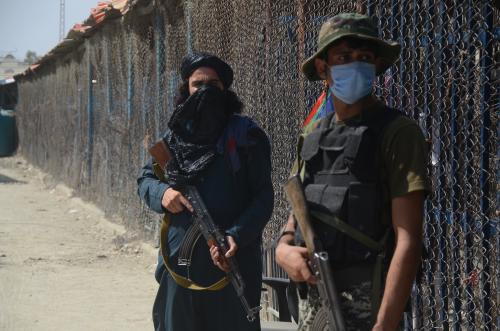The following is a summary of the 19th session of the Congressional Study Group on Foreign Relations and National Security, a program for congressional staff focused on critically engaging the legal and policy factors that define the role that Congress plays in various aspects of U.S. foreign relations and national security policy.
On February 25, 2022, the Congressional Study Group on Foreign Relations and National Security convened over Zoom to discuss the controversial new policy that the Biden administration had recently rolled relating to the handling of Afghanistan’s central bank assets and efforts to attach them in order to enforce judgments against the Taliban for the 9/11 attacks. The policy in question implicated several complex areas of law and policy, which led to a great deal of confusion about what exactly it does. It’s also of immense import, given the current economic and humanitarian crisis unfolding in Afghanistan.
Study group coordinator Scott R. Anderson served as an expert discussion on this topic, given his outside work on the topic. He was joined by Alex Zerden of the Center for a New American Security, who previously ran the Treasury Department’s office at Embassy Kabul.
They recommended the following background readings:
- Scott R. Anderson, “What’s Happening with Afghanistan’s Assets?,” Lawfare (Feb. 18, 2022);
- Jacob Kurtzer and Alex Zerden, “Assessing Economic Crisis Response Options for Afghanistan,” CSIS Commentary (Feb. 9, 2022);
- Alex Zerden, “Establishing a Humanitarian Financial Corridor for Afghanistan,” Lawfare (Nov. 15, 2021).
In addition, during the discussion, a study group participant shared a related report recently assembled by the Congressional Research Service.
Both Anderson and Zerden also appeared to discuss related issues on the Lawfare Podcast.
Anderson began the discussion by providing a detailed explanation of the Biden administration’s policy. Contrary to widespread media reporting, he noted, the Biden administration did not simply split Afghanistan’s approximately $7 billion in central bank assets between Afghans and American victims of the 9/11 attacks. Instead, certain 9/11 victims and other private plaintiffs who had secured judgments against the Taliban had initiated litigation to try and seize the central bank assets in satisfaction of those judgments shortly after the August 2021 takeover by the Taliban. These plaintiffs argue that the central bank assets now essentially belong to the Taliban by virtue of their takeover of the country, even though the Biden administration does not recognize the Taliban as the country’s government.
Contrary to most reporting, Anderson noted, President Biden’s executive order is designed to help insulate some of those assets from that litigation. Specifically, it sets up an arrangement by which about half of the assets—$3.5 billion—is authorized for transfer to a third-party trust, a step that excludes it from possible attachment under relevant judicial precedent. The Biden administration is leaving the remainder in place until the litigation is resolved without taking a stance on the merits, though it filed a statement of interest strongly suggesting that the plaintiffs do not have a valid legal claim to the assets. Anderson acknowledged that the Biden administration might have been able to move more of the funds into the trust to protect them from attached but posited that doing so might have increased the risk that the plaintiffs would have opposed the government’s efforts or otherwise increased litigation risk. The remaining $3.5 billion might also be transferred to the third-party trust if the plaintiffs’ arguments fail in court, though reaching a final resolution was likely to take months if not years. Hence the Biden administration may well have transferred a substantial portion of the funds so they can be made available for uses that may help the Afghan people in a narrower timeframe.
Zerden—who flagged for the study group that he had been retained by a law firm in relation to the litigation and thus would not be commenting on it—then put the Biden administration’s recent actions in a broader context. He provided an overview of the economic crisis that Afghanistan was facing in the aftermath of the U.S. withdrawal, which had been triggered by the sudden cut-off of foreign assistance and interruption of economic activities in light of the Taliban’s rise to power. He noted the need to balance humanitarian and other assistance to Afghanistan with counterterrorism and related goals. He then sketched out potential mechanisms that could be used to facilitate assistance or perform certain central bank and other functions without engagement from the Taliban.
From there, the study group went into open discussion. Topics discussed include the role of foreign and humanitarian assistance in Afghanistan’s economy; Congress’s role in legislation relating to victims of terrorism litigation; and the timeline such litigation might follow moving forward.
Visit the Congressional Study Group on Foreign Relations and National Security landing page to access notes and information on other sessions.



